Publications
The ALPHEUS project will play an important role in renewable energy, especially in augmenting grid stability through low-head pumped hydro energy utilization and storage.
Find below all the publications related to the project.
| Performance Characteristics of a Contra-Rotating Pump-Turbine in Turbine and Pump Modes Under Cavitating Flow Conditions |
Recent studies have indicated the potential of a contra-rotating pump-turbine (CRPT) as a low-head design that enables pumped hydro storage in regions with flat topography. However, the effects of cavitation have scarcely been investigated for the CRPT. The current paper utilises computational fluid dynamics simulations to study a model scale CRPT subjected to cavitating flow conditions to determine how cavitation affects the machine’s operating performance in both pump and turbine modes.

| Design of Shaft- and Rim-Driven Contra-Rotating Reversible Pump-Turbine to Optimize Novel Low-Head Pumped Hydro Energy Storages |
According to the European-Green-Deal, the share of renewable energy sources (RES) in electricity generation is increased by e.g. solar/wind. This requires the deployment of effective energy storage solutions to compensate the fluctuating network supply of RES. A well-developed storage technology is pumped hydro energy storage (PHES), but especially in lowland countries, e.g. Denmark, typical high-head plant locations are missing. Therefore, new developments in low-head hydraulic turbomachineries and smart operation schemes are needed to shape LH-PHES towards a viable future technology through maximizing performance and minimizing investment costs. Hence, this study demonstrates a novel design of contra-rotating, variable-speed, reversible pump-turbines (CR-VS-RPT) for low-head operation with a peak efficiency above 90 % in pump/turbine mode.
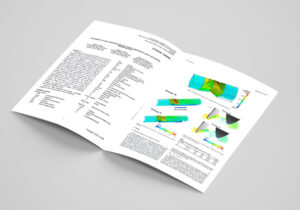
| An Experimental and Numerical Study of a Three-Lobe Pump for Pumped Hydro Storage Applications |
Pumped hydro storage (PHS) plays an important role as a matured technology that accounts for the vast majority of global energy storage capacity, and its expansion is therefore desirable. The expansion of PHS in mid- and high-water heads is limited to topographic features, but there is an untapped potential in low-head applications. For most of the PHS applications, a Francis reversible pump-turbine (RPT) is regarded as the most common and cost-effective machine, but it is not a suitable option for water heads of less than 30m.
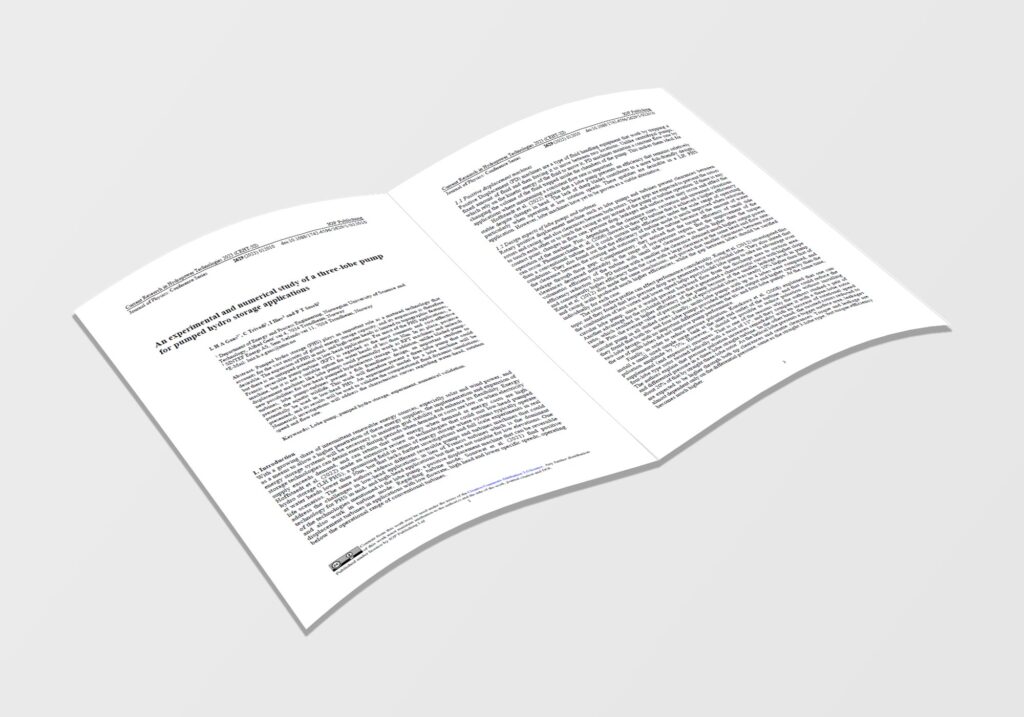
| Optimization of Pumped Hydro Energy Storage Design and Operation for Offshore Low-Head Application and Grid Stabilization |
The increasing share of renewable energy sources in the global electricity generation defines the need for effective and flexible energy storage solutions. PHES with their technically matured plant design and wide economical potential can generally match those needs. But especially for lowland countries, where low-head PHES applications are needed, the current turbomachinery technologies offer no viable solutions for LH-PHES to be a competitive energy storage technology in the context of realizing the European Green Deal.
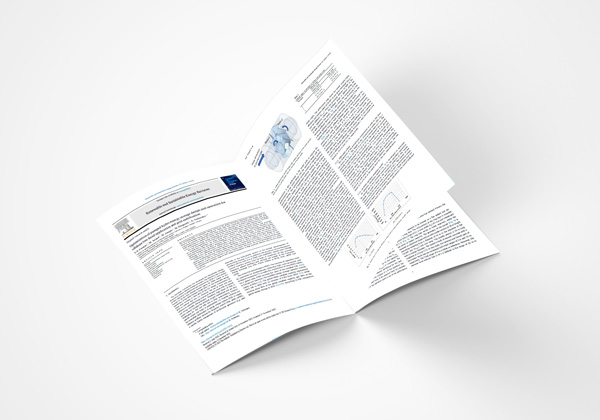
| Stress Response to Entrainment Flow Speed near Pump Inlet Fish Screens in Two Model Teleost Species, Anguilla anguilla and Oncorhynchus mykiss |
Fish screens are structures associated with pump stations and power plants that prevent entrainment of fish, but may also be a source of physiological stress if placed in locations of strong flow speeds that fish are unable to sustain swimming against over time. Herein, the acute response of Anguilla anguilla and Oncorhynchus mykiss to a 30-minute exposure to two water flow regimes were evaluated at the lowest level of the hypothalamus–pituitary–interrenal axis, from blood serum and skin mucus, in a controlled setup presenting a 45◦ vertically-angled fish screen. Cortisol response was species-specific, regardless of the matrix employed.
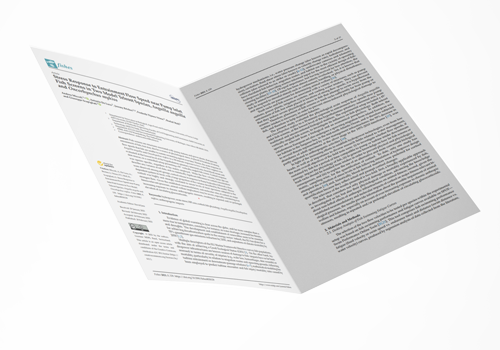
| New Publication: Surrogate based optimisation of a pump mode startup sequence for a contra-rotating pump-turbine using a genetic algorithm and computational fluid dynamics |
Contra-rotating pump turbines (CRPT) have been proposed as a new solution for pumped hydro storage (PHS) at low-head sites. The two individually operated runners give both flexibility and complexity during transient operation, such as startup. This paper presents an optimisation approach for the pump mode startup sequence of a CRPT. The aim is to minimise the loads during fast startups and thus extend the lifetime and increase the flexibility of the CRPT.

| Axial Flux PMSM Power Take-Off a Rim-Driven Contra-Rotating Pump-Turbine |
Pumped hydropower storage (PHS) is a cost-effective and mature energy storage technology. However, it has inherently been limited to locations with suitable topographies. Therefore, the ALPHEUS project aims to implement PHS for shallow seas and coastal environments with the goal of supporting grid stability. To ensure optimal efficiency and fast switching times in these low-head applications, a 10 MW Contra-Rotating (CR) axial Reversible Pump-Turbine (RPT) is designed, which has a rim diameter of 6.4 m and a high efficiency – maximum 84% and 90% for pump and turbine, over a large operating range. Furthermore, the RPT is rim-driven, which averts the hydraulic impact caused by shaft-driven systems. To ensure optimal efficiency at variable speed operation, the runners are driven by two separate Axial-Flux Permanent Magnet Synchronous Machines (AF-PMSMs).
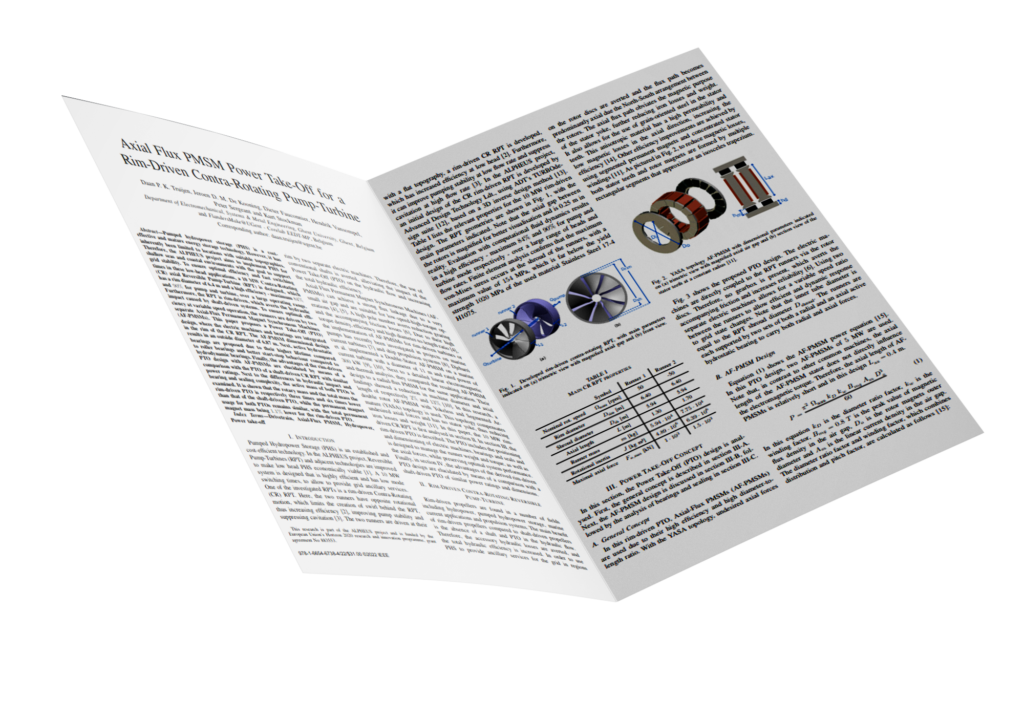
| Low-Head Pumped Hydro Storage: A Review on Civil Structure Designs, Legal and Environmental Aspects to Make its Realization Feasible in Seawater |
The energy transition requires large-scale storage to provide long-term supply and short-term grid stability. Though pumped hydro storage is widely used for this purpose, regions without natural topography do not have the potential for traditional high-head pumped hydro storage. To address this, multiple projects for low-head and seawater-pumped hydro storage have been proposed, though few have been implemented. Here, we review the state of the art of components of low-head seawater pumped hydro storage projects for construction in shallow seas or integrated into coastal defences.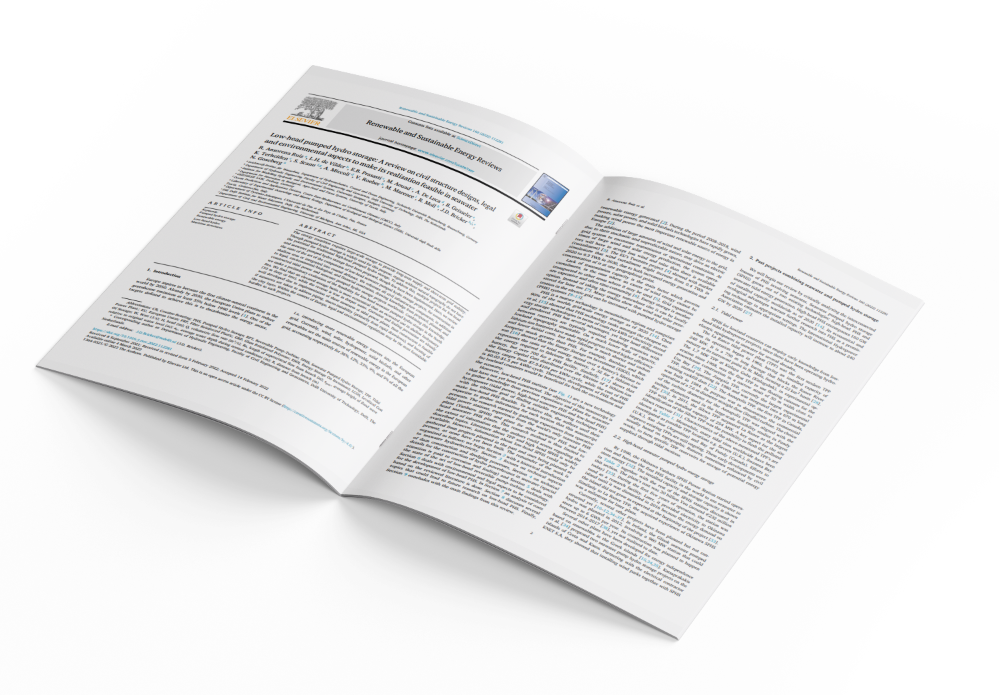 Read more |
| A Head Loss Pressure Boundary Condition for Hydraulic Systems |
Despite the increase in computational power of HPC clusters, it is, in most cases not possible to include the entire hydraulic system when doing detailed numerical studies of the flow in one of the components in the system. The numerical models are still most often constrained to a small part of the system, and the boundary conditions may be difficult to specify in many cases. The main effects of the system are well captured by the head Loss Pressure boundary condition. It is thus a useful and trustworthy boundary condition for incompressible flow simulations of components in a hydraulic system. Read more |
| Drivetrain Architectures for a Mechanically Decoupled Contra-Rotating Reversible Pump-Turbine |
With the rise of renewable energy production in the pan-European grid, the need for flexible energy storage is experiencing a rapid increase. Pumped hydropower storage has proven viability due to its long lifespan and cost-effectiveness. The ALPHEUS project will implement pumped hydropower storage for flat topographies to augment grid stability in adjacent regions. To ensure optimal efficiency and fast switching times in these low-head applications, a contra-rotating axial Reversible Pump-Turbine (RPT) is designed.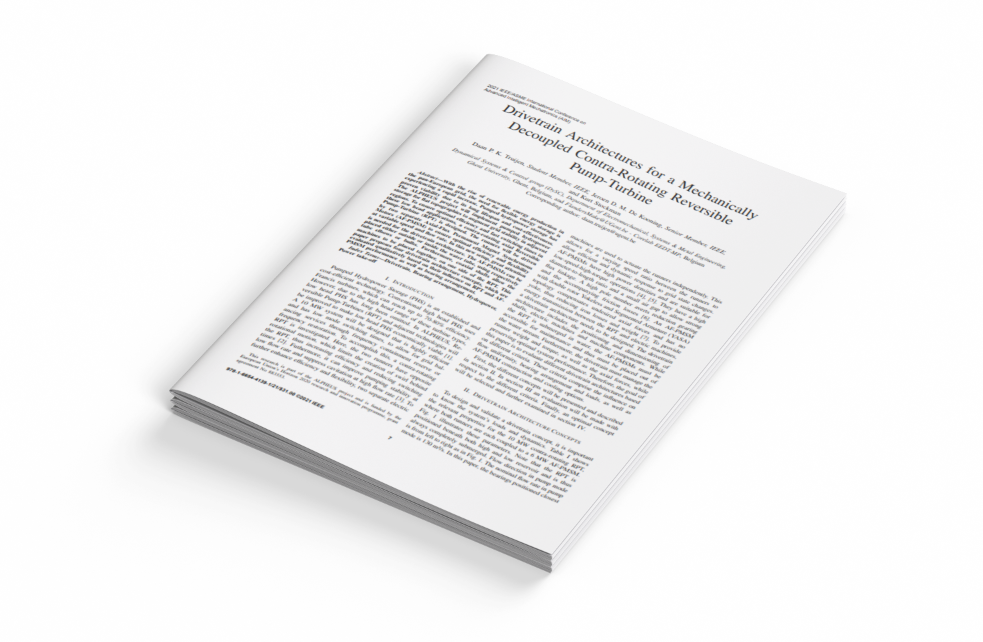 Read more |
| Numerical Analysis of an Initial Design of a Counter-Rotating Pump-Turbine |
The paper presented at the IAHR conference ‘Numerical Analysis of an Initial Design of a Counter-Rotating Pump-Turbine’ has been published by IOPscience. The ALPHEUS Horizon 2020 EU project aims to develop a low-head hydraulic pump turbine that can work as a grid stabilising unit. This work presents numerical results of an initial hub-driven counter-rotating pump-turbine design within ALPHEUS. Computational fluid dynamics simulations are carried out in both prototype and model scale for pump and turbine modes and under steady-state and unsteady conditions. Read more |
| Flow Characteristics of Preliminary Shutdown and Startup Sequences for a Model Counter-Rotating Pump-Turbine |
Pumped Hydropower Storage (PHS) is the maturest and most economically viable technology for storing energy and regulating the electrical grid on a large scale. Due to the growing amount of intermittent renewable energy sources, the necessity of maintaining grid stability increases. Most PHS facilities today require a geographical topology with large differences in elevation. The ALPHEUS H2020 EU project aims to develop PHS for flat geographical topologies.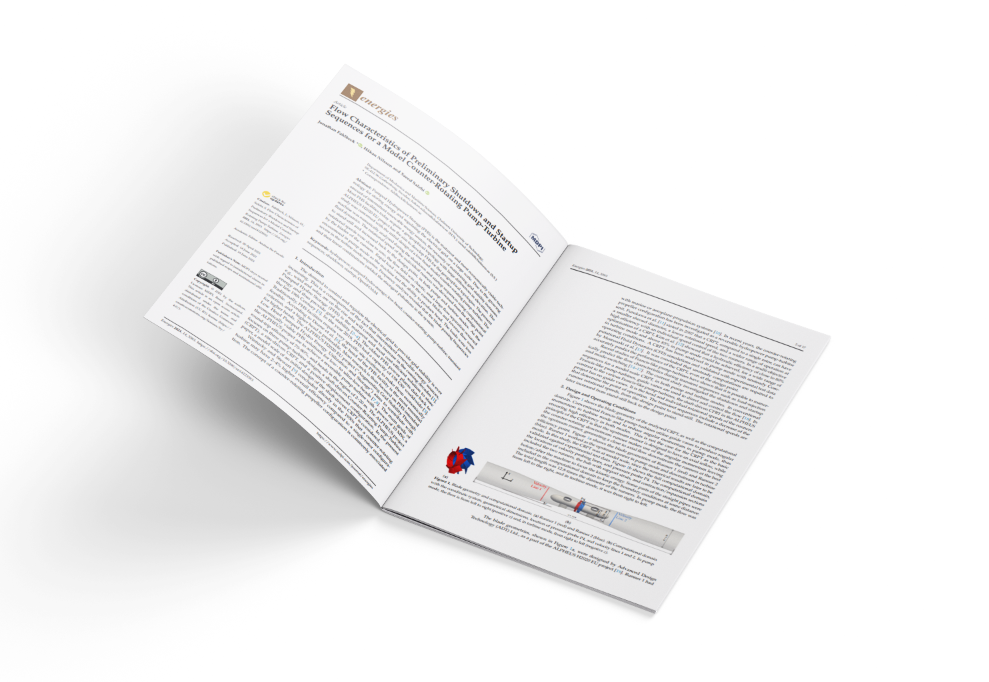 Read more |
| The Contribution of Low-head Pumped Hydro Storage to a successful Energy Transition |
The ALPHEUS project will introduce a low-head PHS for a relatively flat topography. This paper introduces a grid-forming controlled inverter coupled with low-head PHS that can contribute to the grid stability, emphasising its ability to provide different AS, especially frequency control, through the provision of synthetic system inertia as fast Frequency Containment Reserves (fFCR).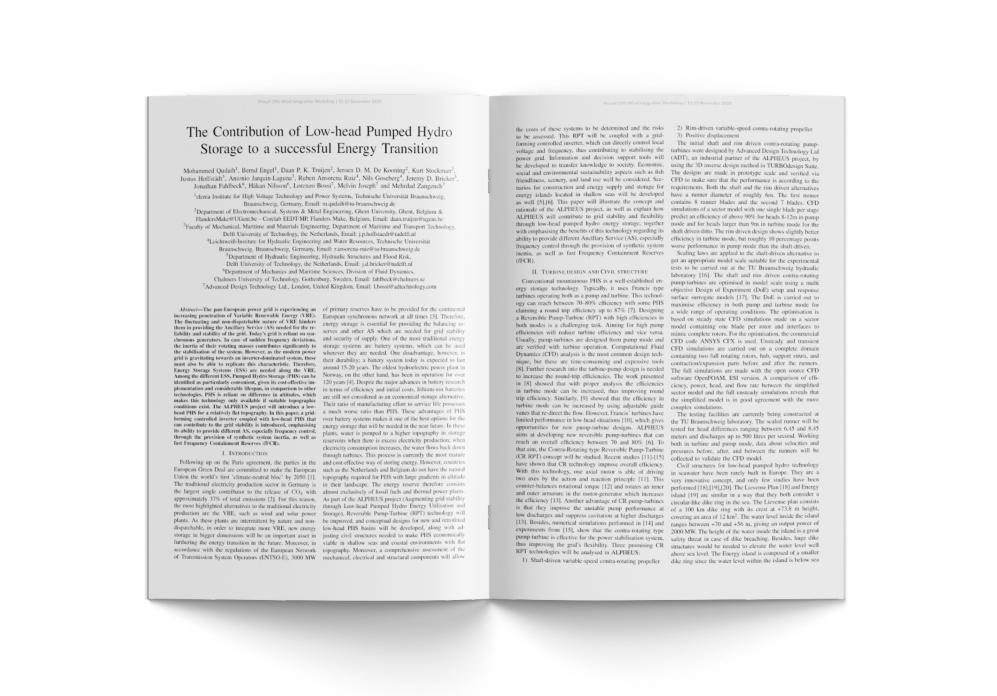 Read more |

